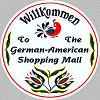|
|
 |
 |
|
German winegrapes: |
|
|
 |
|
|
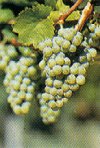
|
Riesling
This grape is once again number one in Germany. The 23,077 hectares on which it is planted. surpassed the Müller-Thurgau grape's 22,757 hectares in
1996 Riesling is considered one of the most precious types of grapes, with a wide variety.- It comes in all shapes, from simple table wine to expensive premiums such as eiswein or trockenbeerenauslese.
Rieslings are typified by their full fruit and tangy flavor. |
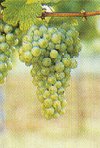
|
Weissburgunder
Chardonnay, grauburgunder, and weissburgunder are related, but not identical. Grauburgunder is the most popular of the three, but the area on
which weissburgunder is grown has doubled in the last ten years. Chardonnay, only recently officially authorized, was an instant success. Dry grauburgunder is characterized by its earthy and acidic flavor.
Its heavy, sweeter counterpart is called Ruländer. |
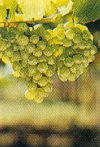
|
Silvaner
This traditional grape was once the most important in Germany, but the past 20 years have seen its land area slip rapidly to just 7,500 hectares. The
best silvaners come from the Rhine and Hesse region, and Franconia. A lightly dusty hint in aroma and lots of spice in taste are typical. The nobly sweet varieties of this grape can produce a wonderfully
mature, long-lasting wine. |
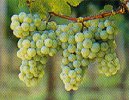
|
Kerner
Despite a slight decrease in area, the 7,500 hectares upon which this cross between a red trollinger and white riesling grape is grown demonstrate its
continued importance, especially in the Rheinhessen and Pfalz wine-producing regions, as well as in the Mosel and Württemberg areas. It can be grown over a wider region than riesling. A complex, sometimes
pungent aroma is typical Kerners tend to be strong but note specially elegant wines. |
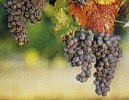
|
Spätburgunder
This noble red grape is grown in Baden much more than anywhere else (4,400 Hectares,), but in recent years the best wines of its type have come
from the Pfalz and Ahr. A fine, slightly smokey blackberry aroma and smoothness to the taste are typical of a good "burgundy" like this. Maturing in wooden casks or barriques is especially good for this
wine. The best wines of its type are among the most prestigious all wines. |
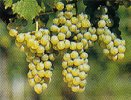
|
Müller-Thurgau
The grape was first planted in the Rhine Valley in 1882 by Swiss professor Hermann Müller who came from the canton of Thurgau. It was the leading
grape in Germany for a long time without ever having such a brilliant reputation. It is now in the number 2 position, behind riesling. The wine typically has a delicate nutmeg aroma. The wine has recently
come to be marketed as a tivaner, together with a leaner, more acidic tone. |
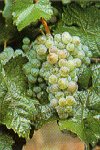
|
Elbling
Elbling was being grown in Germany even before the Middle Ages and delivers a wonderful grape from almost any soil. Today, however, the grape is found
only in the upper Mosel, southwest of Trier. The harvests have become smaller, the wine better. Its heavy tartness is not for everybody. Nevertheless, Elbling has been in considerable demand over the past
few years. The grape also has the added advantage of being able to form an excellent basis for sparkling wines. |
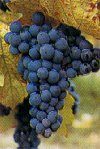
|
Lemberger
There is almost no lemberger outside Württemberg. Only in Baden, the Palatinate (Pfalz), and Franconia are there some small vineyards. The grape
delivers the best red wines from Württemberg. However, vintners need lots of patience for the grape to Open, and German winegrowers are, unfortunately, not ambitious enough in this regard. Lemberger can be a
great wine, witness Austria's efforts. |
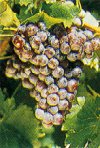
|
Trollinger
Why Württembergers cling to their light, almost rosy wine is difficult to explain, except for its notorious drinkability. Looked at in terms of soil
and climate, this widely planted grape produces a truly convincing wine only in exceptional cases. But there is a great demand in Swabia for uncomplicated, inexpensive table wine, similar to that in the
South Tyrol, where the grape is also very popular, under the name Vernatsch. Portugieser Germany's number 2 red wine grape bets special importance in the Palatinate and the Rhine and Hesse area, generally
called Rheinhessen. The portugieser grape produces excellent quality when the harvest is radically cutback. Otherwise, the grape yields a pleasant, mostly dry table wine. The grape's origins are unclear, but
its name is the only thing it has in common with Portugal. |
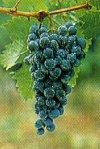
|
Dornfelder
The most successful new grape is making a wonderful career for itself. It came originally from a crossing of the negligible helfensteiner and herold
grapes and was supposed to improve the color of bright red burgundy. But dornfelder came through as a robust, strong red wine in its own right - due especially to barrique casking. It is grown mostly in the
Palatinate, and is known in the region as an excellent Pfalzwein. |
|
 |
 |
|
This text has been reprinted from the Deuschland Magazine No. 5, October 1997.copyright 1997 Deutschland Magazine |
|
